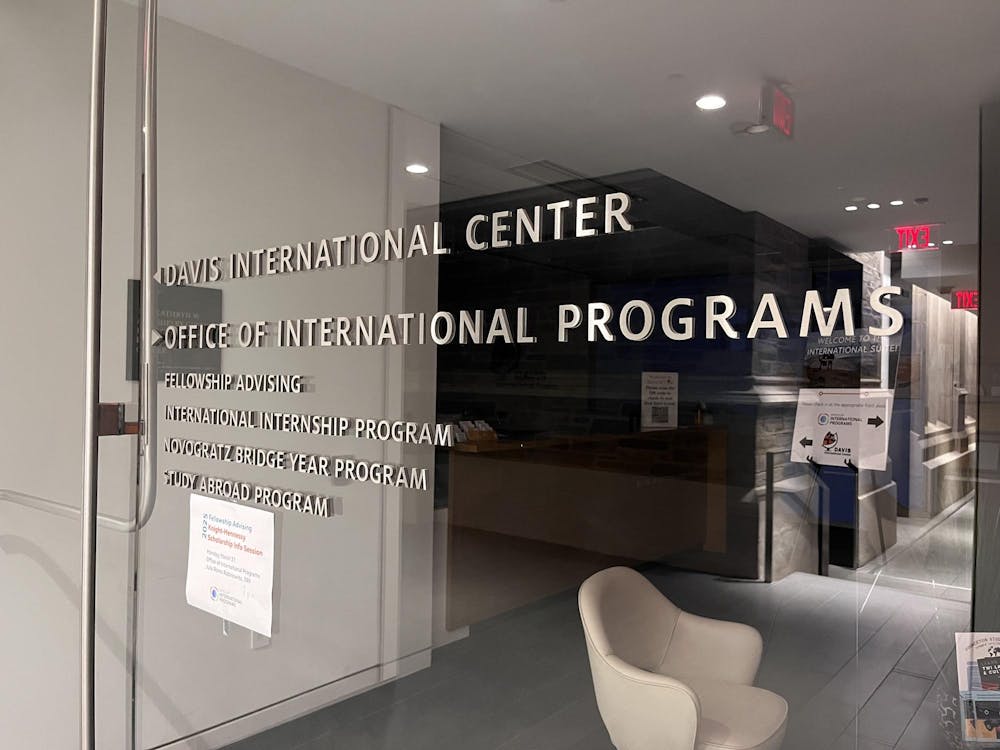An expectant crowd gathers on the Frist lawn and surrounds three orange fabric squares placed on top of a larger black rectangle. All await the presentation of Koji Kakinuma, a Japanese calligrapher. Japanese music fills the air, and a formal introduction has been made. Kakinuma walks onto the fabric, paces anxiously and suddenly takes off running.
"Where is he going — is he leaving?" a spectator asks in mild disbelief while others mutter to themselves in similar confusion. "Maybe he just forgot something," a student says.
But the artist returns minutes later — apparently from a necessary "warm up" — and kneels on the cloth to assemble his brush, which upon completion resembles a regular custodial mop. There is more restless pacing, a noticeable increase in intensity and focus. Finally, Kakinuma seizes the brush and, having placed it inside a bucket of ink-black paint, hoists it onto the fabric. Seconds later, he completes a large black "P" on the center orange square — a "P" for Princeton.
The calligrapher is demonstrating shodo, the Japanese art of brush-writing, but it is not a typical display by any means. Kakinuma, over many years of diligent study, has developed his own distinct style and approach.
Few calligraphers work with such a large brush or on such a large scale, both of which cause imprecision and thus forestall careful artistic planning, East Asian studies professor David Howell explained in his introduction to the performance.
Kakinuma's approach — attempting large works without meticulous preparation — "represents a one-shot, winner-take-all sensibility that permits no uncertainty and no hesitation and allows no regrets and no revision," Howell said, quoting Kakinuma's own explanation of his style.
The artist proceeds to the other two orange squares, on which he paints, in his quick and spontaneous style, two different characters, each representing a tiger. The work demands considerable physical exertion — at times, the brush is so heavy that it must be dragged — and, after he has made his final mark, Kakinuma stumbles to the ground, exhausted and short of breath. He receives enthusiastic applause at the conclusion of the exercise, which took less than five minutes.
The University students in attendance said they enjoyed the performance, which was organized by the Department of East Asian Studies, not least because of its unique and lively blend of showmanship and artistic originality.

"I thought it was really interesting and really good — visually and musically stimulating, short but sweet," Cleo Kirkland '07 said.
"It was a very interesting combination of Japanese art with the style of American performance. It was a lot of fun to watch," Will Sullivan '09 said.
After the presentation, a woman remarked that Kakinuma's intense concentration reminded her of a rock star. Two loudspeakers, positioned on the ledge behind the Eastern-music performers, then began to blare the dynamic theme music from Mission Impossible — as if to reinforce her words.








